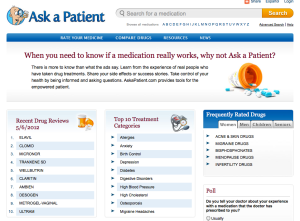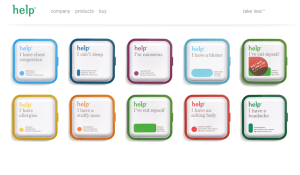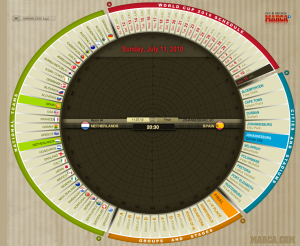A recent discussion on LinkedIn asked the![]() question: “Who in your office is responsible for maintaining your social media accounts?” The responses were all over the lot, with the top five being:
question: “Who in your office is responsible for maintaining your social media accounts?” The responses were all over the lot, with the top five being:
- The business owner/principal
- An administrator
- An outsourced firm
- Receptionist/interns
- On-site staff dedicated to social media
Rather than discuss the pros and cons of each, I was prompted to analyze the basic requirements of the function and the attributes needed to perform it well. Here are my six criteria.
1. Social media affinity and skills
Of paramount importance is social aptitude. Someone who uses and enjoys social media socially understands what’s likeable, what’s shareable and what activates an audience. Someone who doesn’t “get” the rules of engagement from a user perspective can’t possibly relate. This doesn’t mean that your teenage daughter with x thousand Facebook friends is the best choice for your community manager, either.
A good fit requires everything from soft skills to the highly technical. Being able to tell a good story in a sincere, authentic way is vital. So, too, are at least basic skills in every storytelling medium, from photography and graphics to video.
You also need a firm grasp of the technical aspects of social media maintenance, from dashboards to analytical tools, plus an early adopters zeal in keeping abreast of this ever-changing landscape.
2. Analytical mindset
Speaking of analytical tools, it doesn’t hurt to have the statistical aptitude to be able to turn that data into actionable insights. By the way, that’s a skill that even most seasoned marketers lack, according to a recent CEB study of nearly 800 marketers at Fortune 1000 companies.
3. Business sense to execute your social media strategy
It goes without saying (or it SHOULD, anyway) that if social media is to be an effective part of your overall marketing and communications program, there should be a clear strategy and objective in place. The best goals are S.M.A.R.T. (Specific. Measurable. Attainable. Realistic. Timely.) Assuming that all that is in place, whoever maintains the accounts needs to be totally in sync, measuring results against goal and adjusting tactics and content to maximize returns.
4. Deep customer insights
Whether from market research, personal experience, “listening” through social media channels or all of the above, an intimate understanding of—and empathy for—customer likes, wants, needs, pain points and aspirations is key to audience engagement.
5. Knowledge of your business
Familiarity with the internal workings of the organization is a huge help in identifying content opportunities and sources to keep your social media channels fresh and pertinent. It’s also important to have a thorough understanding of the business’s social media policies, as well as any rules & guidelines governing customer service and your industry. Last, but not least, you have to know when consult a higher authority.
6. Time—and not just during normal office hours, either
Social media is 24/7, crosses time zones and continents, and requires timely responses in order to engage the community and keep the conversation going. Evidence suggests that many demographics and social media channels are most active evenings and weekends.
And then, you never know when you’re going to get that brand-breaking customer complaint. When Frank Eliason pioneered @ComcastCares to provide customer support via Twitter, he was tethered to his smart phone day and night. Granted, there are software tools and vendor services for scheduling and monitoring social media activity when you can’t. But somebody has to be on the receiving end for those critical alerts.
Bottom line: you’re either real time or you’re irrelevant.

Photo courtesy of caribb
Sound like a 6-headed monster?
If your receptionist or intern possesses all of these qualities, they’re either a real gem and should be promoted or they’re the mythical 6-headed monster Scylla. (Not sure I’d want to mess with her.) But in the non-mythical world, this confluence of talents rarely, if ever, rears its head(s).
Truth is, social media marketing is a team sport and your campaign could benefit from the input of everyone on the above list. The business insights and strategy of the business owner/principal; Administrator-approved social media policies and guidelines; The social marketing savvy, technical know-how and toolset of an interactive shop; Even the real world social media user’s perspective of your receptionist and interns.
But ultimate responsibility for day-to-day maintenance and management of your social media efforts should rest with a dedicated on-site staff.
Take a page out of Facebook
While by no means the only social media channel, Facebook nevertheless provides a good template for a social media management team right in its brand page admin set-up. It allows for the creation of five different roles with different areas of responsibility:
- Manager
- Content Creator
- Moderator
- Advertiser
- Insights Analyst
These roles don’t have to be mutually exclusive, if your social media campaign is in its infancy. For instance, the manager could also be the moderator and the Insights Analyst could work in your IT department. But more than likely, you will have many people throughout the company creating content. For instance, Zappos has 10 employees pinning on its Pinterest boards alone. But it takes integrated efforts of a properly trained in-house team, who know the business, its culture and its customers, to turn social media into an integral part of your marketing program. And that will reward you with the best and most consistent results in the long run.






